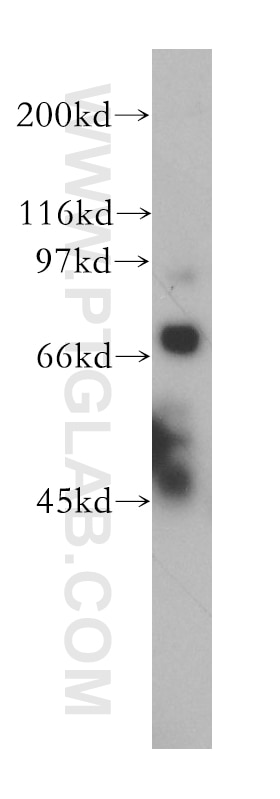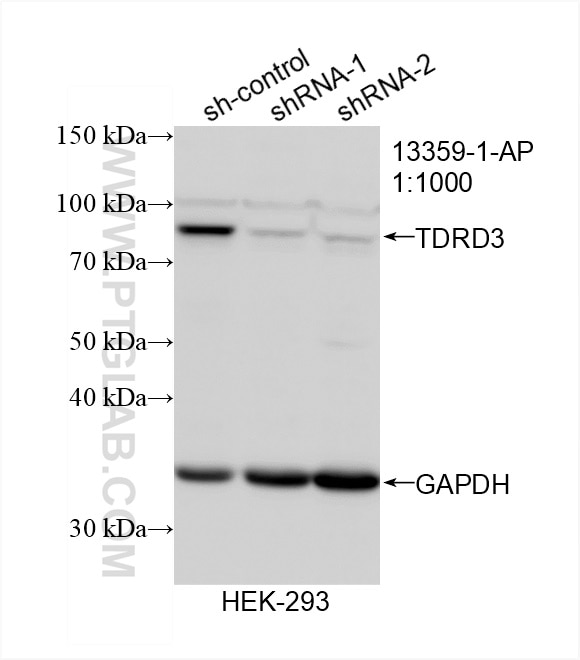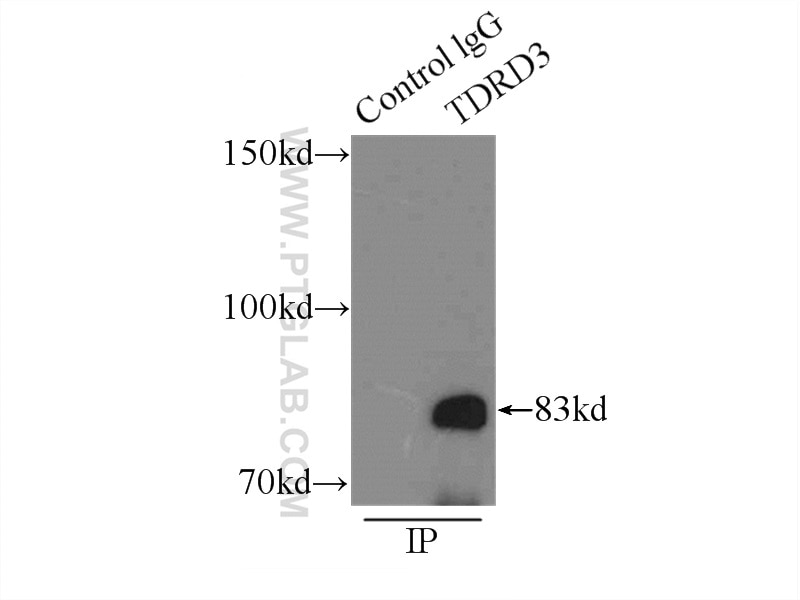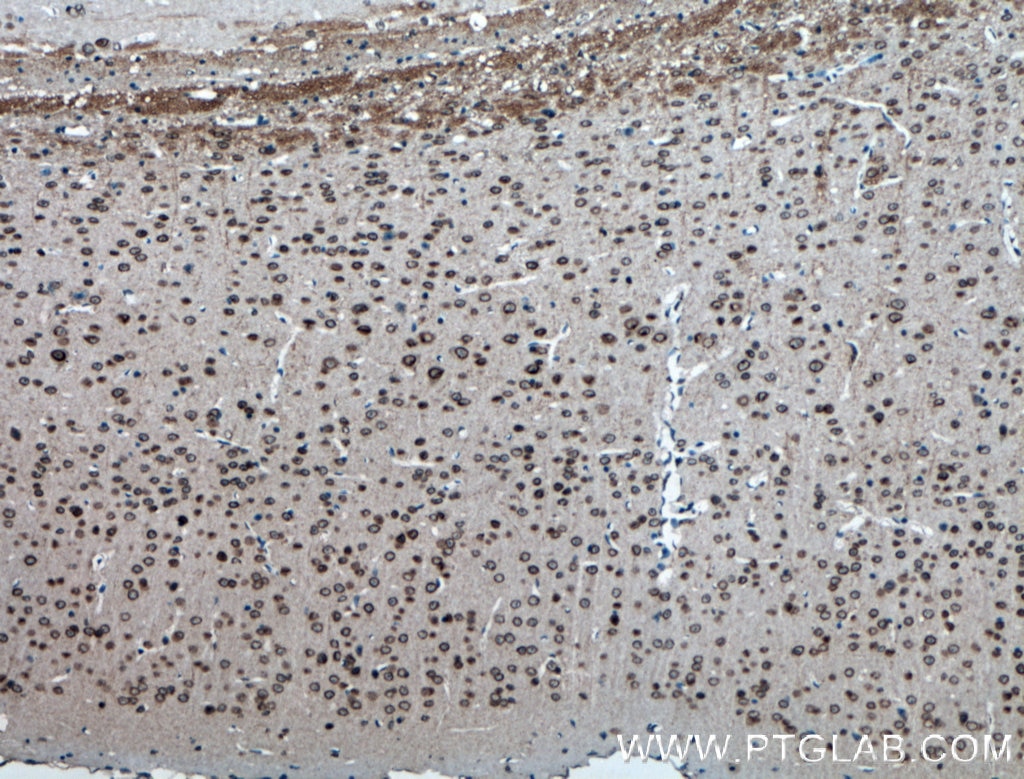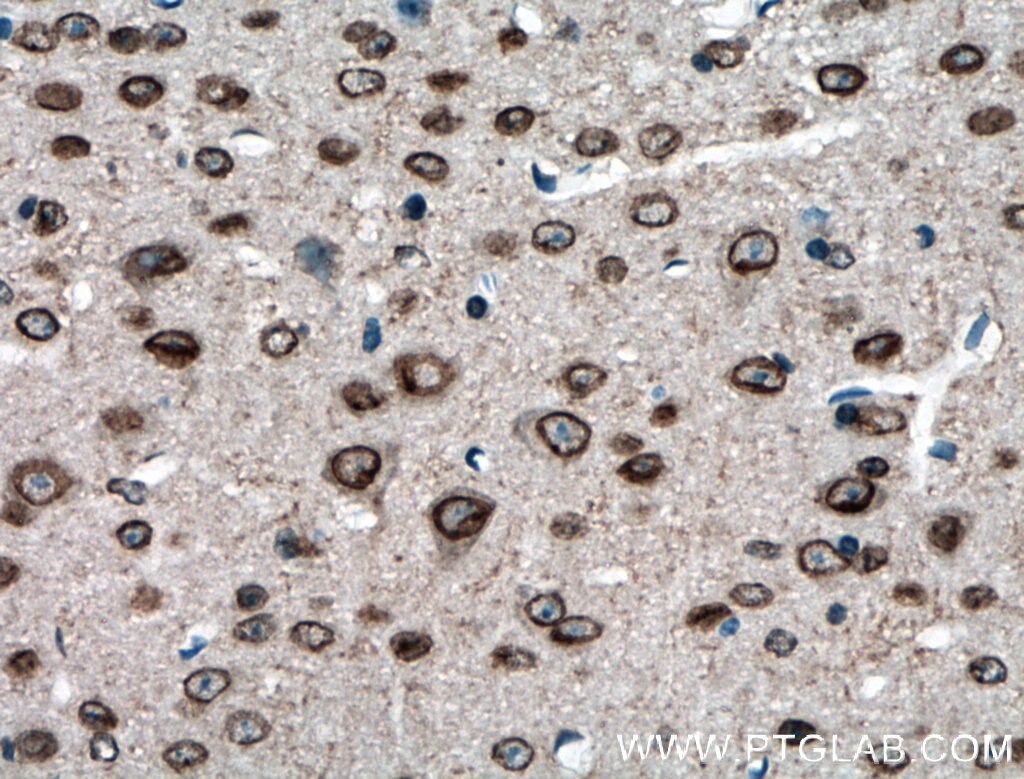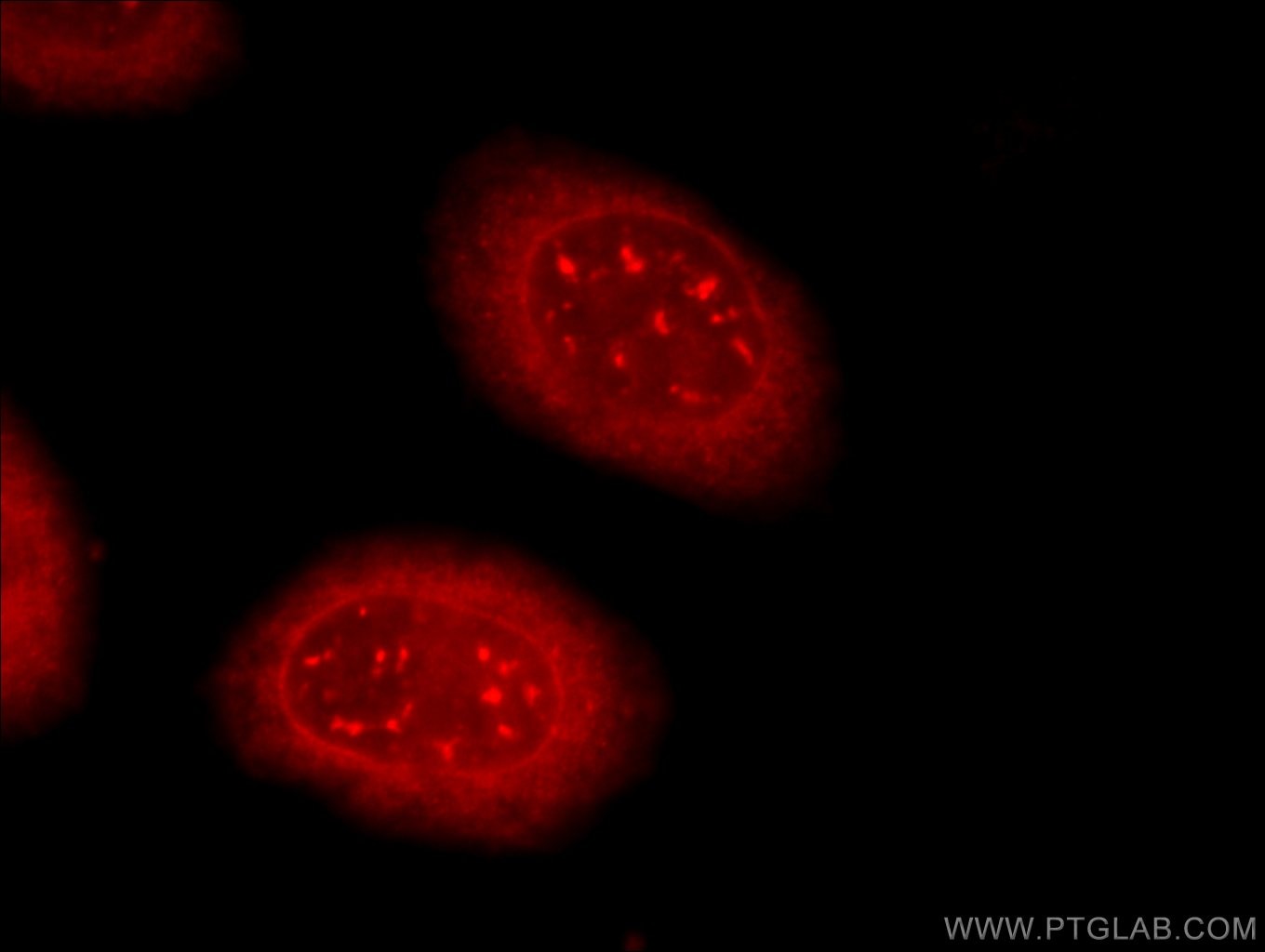Tested Applications
| Positive WB detected in | HEK-293 cells |
| Positive IP detected in | HeLa cells |
| Positive IHC detected in | mouse brain tissue Note: suggested antigen retrieval with TE buffer pH 9.0; (*) Alternatively, antigen retrieval may be performed with citrate buffer pH 6.0 |
| Positive IF/ICC detected in | HeLa cells |
Recommended dilution
| Application | Dilution |
|---|---|
| Western Blot (WB) | WB : 1:500-1:2000 |
| Immunoprecipitation (IP) | IP : 0.5-4.0 ug for 1.0-3.0 mg of total protein lysate |
| Immunohistochemistry (IHC) | IHC : 1:50-1:500 |
| Immunofluorescence (IF)/ICC | IF/ICC : 1:10-1:100 |
| It is recommended that this reagent should be titrated in each testing system to obtain optimal results. | |
| Sample-dependent, Check data in validation data gallery. | |
Published Applications
| WB | See 1 publications below |
| ChIP | See 1 publications below |
Product Information
13359-1-AP targets TDRD3 in WB, IHC, IF/ICC, IP, chIP, ELISA applications and shows reactivity with human, mouse, rat samples.
| Tested Reactivity | human, mouse, rat |
| Cited Reactivity | human |
| Host / Isotype | Rabbit / IgG |
| Class | Polyclonal |
| Type | Antibody |
| Immunogen |
CatNo: Ag4174 Product name: Recombinant human TDRD3 protein Source: e coli.-derived, PGEX-4T Tag: GST Domain: 301-651 aa of BC030514 Sequence: YRSSNTEQNGVKDNNHLRHPPRNDTRQPRNEKPPRFQRDSQNSKSVLEGSGLPRNRGSERPSTSSVSEVWAEDRIKCDRPYSRYDRTKDTSYPLGSQHSDGAFKKRDNSMQSRSGKGPSFAEAKENPLPQGSVDYNNQKRGKRESQTSIPDYFYDRKSQTINNEAFSGIKIEKHFNVNTDYQNPVRSNSFIGVPNGEVEMPLKGRRIGPIKPAGPVTAVPCDDKIFYNSGPKRRSGPIKPEKILESSIPMEYAKMWKPGDECFALYWEDNKFYRAEVEALHSSGMTAVVKFIDYGNYEEVLLSNIKPIQTEAWEEEGTYDQTLEFRRGGDGQPRRSTRPTQQFYQPPRARN Predict reactive species |
| Full Name | tudor domain containing 3 |
| Calculated Molecular Weight | 651 aa, 73 kDa |
| Observed Molecular Weight | 73 kDa, 83 kDa |
| GenBank Accession Number | BC030514 |
| Gene Symbol | TDRD3 |
| Gene ID (NCBI) | 81550 |
| RRID | AB_2202810 |
| Conjugate | Unconjugated |
| Form | Liquid |
| Purification Method | Antigen affinity purification |
| UNIPROT ID | Q9H7E2 |
| Storage Buffer | PBS with 0.02% sodium azide and 50% glycerol, pH 7.3. |
| Storage Conditions | Store at -20°C. Stable for one year after shipment. Aliquoting is unnecessary for -20oC storage. 20ul sizes contain 0.1% BSA. |
Background Information
TDRD3 (Tudor domain-containing protein 3) contains tudor domain which is an approximately 60-amino acid structure motif. TDRD3 functions as a scaffolding protein that specifically recognizes and binds dimethylarginine-containing proteins. TDRD3 is a transcriptional coactivator that promotes transcription by binding methylarginine marks on histone tails. TDRD3 also possesses an oligosaccharide/nucleotide binding fold and an ubiquitin associated domain capable of binding tetra-ubiquitin, and it is reported to associate with polyribosomes in HeLa cells.
Protocols
| Product Specific Protocols | |
|---|---|
| IF protocol for TDRD3 antibody 13359-1-AP | Download protocol |
| IHC protocol for TDRD3 antibody 13359-1-AP | Download protocol |
| IP protocol for TDRD3 antibody 13359-1-AP | Download protocol |
| WB protocol for TDRD3 antibody 13359-1-AP | Download protocol |
| Standard Protocols | |
|---|---|
| Click here to view our Standard Protocols |
Publications
| Species | Application | Title |
|---|---|---|
Theranostics A hypermethylation strategy utilized by enhancer-bound CARM1 to promote estrogen receptor α-dependent transcriptional activation and breast carcinogenesis. | ||
Int J Biol Macromol PRMT1 and TDRD3 promote stress granule assembly by rebuilding the protein-RNA interaction network |

